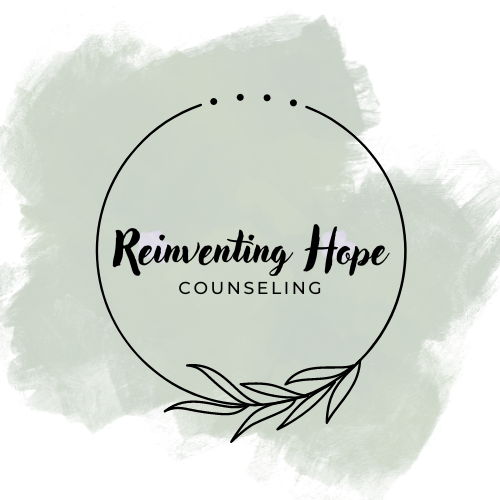Understanding Avoidant Attachment and Helpful Tips
Understanding Avoidant Attachment and Helpful Tips
Avoidant attachment, also known as dismissive-avoidant attachment, is a pattern of attachment that can develop in childhood due to emotional neglect or rejection.
Avoidant Attachment Style Traits
An avoidant attachment style is characterized by a tendency to keep emotional distance from others and to avoid becoming too dependent or attached in relationships. People with an avoidant attachment style often prioritize self-sufficiency and independence, and they may have difficulty fully opening up and trusting others. hey may come across as aloof or distant in relationships. They may also struggle with trust issues, fear of dependence, and have difficulty expressing their emotions and needs. A person with this attachment style has a positive view of the self but a negative view of others.
Here are some common symptoms and behaviors associated with an avoidant attachment style:
Emotional Detachment: Individuals with an avoidant attachment style often struggle to express or identify their emotions. They might downplay their feelings and avoid discussing emotional topics.
Difficulty with Intimacy: Avoidantly attached individuals may find it challenging to establish deep emotional intimacy with their partners. They might shy away from sharing their vulnerabilities or allowing themselves to be truly known.
Fear of Dependency: People with an avoidant attachment style have a strong fear of becoming too dependent on others. They prioritize their independence and may feel uncomfortable when they perceive that someone is becoming too close.
Reluctance to Commit: Avoidant individuals may hesitate to commit to long-term relationships or avoid making plans for the future with their partners. This is often due to their fear of feeling trapped or suffocated.
Push-Pull Dynamics: Avoidant individuals can exhibit a push-pull dynamic in relationships. They might initially seek closeness and intimacy but then pull away when things start to feel too intense or emotionally vulnerable.
Self-Reliance: Those with an avoidant attachment style tend to rely on themselves for emotional support and may be hesitant to ask for help or support from others, even when they are struggling.
Minimizing Relationship Importance: Individuals with an avoidant attachment style might downplay the significance of their relationships or express a preference for casual or non-committal relationships.
Unwillingness to Express Needs: Avoidantly attached individuals often have difficulty expressing their needs and desires to their partners. They may fear that expressing needs will make them appear weak or dependent.
Discomfort with Emotional Expression: They might feel uncomfortable when their partners express strong emotions, especially those related to attachment and intimacy.
Focus on External Distractions: When emotions become overwhelming or relationships become too intense, avoidant individuals may turn to external distractions such as work, hobbies, or social activities to avoid dealing with their feelings.
Independence in Times of Stress: Instead of seeking support from their partners in times of stress, avoidantly attached individuals tend to withdraw and cope on their own.
To heal avoidant attachment in relationships, it is important to work on developing a secure attachment style.
How to Heal Avoidant Attachment Style
Develop self-awareness: Becoming aware of your attachment style and how it affects your behavior and emotions can help you take steps to change it.
Be aware of triggers and patterns: Identify ways you create distance in relationships. Challenge your perceptions and beliefs about relationships. Are “all relationships are exhausting”? What relationships are nice?
Make a relationship gratitude list: Since your tendency can be to look at all the negatives surrounding your partner in order to create distance, notice and practice gratitude around the positives of the relationship.
Practice vulnerability: Work on sharing your emotions and needs with your partner in a safe and respectful manner. Challenge that inner critic that says it is not worth the hassle to open up. Love this idea that “if you want to be closer to a partner than you otherwise might normally be, try using your instinctual desire for independence in a different way: by realizing you can independently choose to be more intimate, that it's your own choice to do so, not something being forced upon you.”
Improve communication: Work on expressing your needs and feelings (especially when you need space) in a clear and direct manner, and listen actively to your partner. Additionally, asking intimacy building questions from a book or workbook can build communication and connection.
Practice intimacy: Engage in activities that promote emotional closeness and intimacy, such as physical touch, sharing personal experiences, and things like partner yoga.
Think outside the Box: Identify how a secure individual in your life would handle the same situation differently.
Seek therapy: Working with a therapist can help you explore your attachment history and develop strategies for building more secure relationships.
People with an avoidant attachment style may find it challenging to maintain healthy, balanced relationships, as their tendency to keep emotional distance can hinder their ability to connect deeply with others. Healing from avoidant attachment is a process that takes time and effort. Be patient with yourself and your partner, and celebrate small victories along the way. Remember “when you feed into your attachment, you are abandoning yourself and your needs. Even avoidant individuals are abandoning their need for connection.”
If you or someone you know is struggling with an avoidant attachment style, seeking therapy or counseling can provide valuable insights and strategies for developing more secure and fulfilling relationships.
For more on attachment styles I recommend “Attached” by Amir Levine and Rachel Heller or check out some links below:
https://www.attachmentproject.com/blog/avoidant-attachment-triggers/
https://blog.zencare.co/how-to-stop-being-avoidant-in-relationships/
For someone with an avoidant partner:
https://www.thecouplescenter.org/7-tips-for-avoidant-attachment-style-in-a-relationship/

